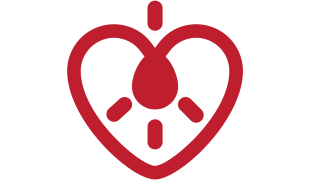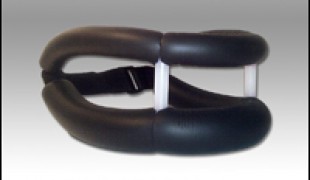- 12165
- 618
- 22
- 16
- 0
- Help Ukraine
About the solution
As Shelly watched her daughter struggle with persistent, debilitating pain, she threw herself into a search for alternatives to high doses of pain medication. Shelly's tireless pursuit led first to low-level lasers, then to the revolutionary discovery of multi-modal technologies. The result not only helped her daughter — who's since completely healed and has given birth to her own child — but has proved to be a promising therapy for other pain sufferers as well.
So Shelly founded Neurolumen LLC in 2008.
The Neurolumen device consists of a control unit, six wraps and a battery charger. Each wrap contains two laser diodes, four light emitting diodes and one or two nerve stimulation gel pads - the pads are attached to the wraps and then the wraps are applied to the feet, ankles and legs.
Once the wraps are in place, the control unit provides up to 30 minutes of simultaneous transcutaneous electrical nerve stimulation (TENS), and specifically engineered low-level laser (LLLT) and light-emitting diode (LED) therapy. The innovative nature of the technology offers significant improvement over laser-only or stimulation-only devices. It operates on a single charge of the internal lithium-ion battery.
Recommended use is three 30-minute cycles a week for the first month, and then once a week or as needed after that. Because the Neurolumen device is portable. It's easy to set up and use, and maintenance is minimal.
The Neurolumen device can be used by patients dealing with neuropathy, diabetes, vascular disease, atherosclerosis, arthritis, chemotherapy and injury. It's effective for treating virtually every type of pain.
The Neurolumen device is FDA approved.
Adapted from: http://www.neurolumen.com/about.php
What about you, do you have any solutions? Please share them with the Patient Innovation community!
https://www.youtube.com/watch?v=gJW1-YpCSQU
This solution shall not include mention to the use of drugs, chemicals or biologicals (including food); invasive devices; offensive, commercial or inherently dangerous content. This solution was not medically validated. Proceed with caution! If you have any doubts, please consult with a health professional.
DISCLAIMER: This story was written by someone who is not the author of the solution, therefore please be advised that, although it was written with the utmost respect for the innovation and the innovator, there can be some incorrect statements. If you find any errors please contact the patient Innovation team via info@patient-innovation.com
-
-
415
-
0
-
6024

Veterans with Phantom Pain Helped with Neurolumen
CAREGIVING
Limb Amputation
Polyneuropathy
Treatment/Surgical device
Difficulty walking or moving
Muscle weakness
Muscle cramps or spasms
Difficulty coordinating movements
Stiffness or rigidity (difficulty moving)
Limited range of motion
Muscle pain or stiffness
Loss of muscle coordination
Numbness or tingling in the extremities
Anxiety
Swelling or inflammation
Managing pain
Recovering from Traumatic Injuries
To improve Treatment/Therapy
Caregiving Support
Endocrinology
General and Family Medicine
General Surgery
Neurology
Orthopedics
Physical Medicine and Rehabilitation
Rheumatology
United States
-
-
-
268
-
0
-
3639

shanesneckbrace
VENTILATION
WALKING: Walking
BODY BALANCE: Maintaining body balance
STANDING UP: Standing up from a seated position
SLEEP FUNCTION: Resting
CAREGIVING
Spinal Cord and Nerve Root Disorders
Treatment/Surgical device
Gait abnormalities (e.g., walking difficulties, unsteady gait)
Tremors
Muscle cramps or spasms
Stiffness or rigidity (difficulty moving)
Paralysis of the legs and lower body
Muscle weakness
Loss of balance
Numbness or tingling in the extremities
Fatigue
Managing pain
Promoting self-management
Preserving Organ Function
Managing Neurological Disorders
Recovering from Traumatic Injuries
Restoring Blood Circulation
To improve Treatment/Therapy
Preventing (Vaccination, Protection, Falls, Research/Mapping)
Neurology
Neurosurgery
Orthopedics
Physical Medicine and Rehabilitation
Rheumatology
Sports Medicine
United States
-
-
-
548
-
0
-
7429

Slacks with zippers on both sides for patients who have to stand up in public
CAREGIVING
(SELF)-CARE: DRESSING: Dressing independently.
Amyotrophic Lateral Sclerosis
Strategy/Tip
Body-Worn solutions (Clothing, accessories, shoes, sensors...)
Tremors
Muscle cramps or spasms
Stiffness or rigidity (difficulty moving)
Muscle weakness
Trouble with fine motor skills (e.g., writing, buttoning clothes)
Sleep disturbances
Numbness or tingling in the extremities
Restoring mobility
Managing pain
Promoting self-management
Managing Neurological Disorders
Promoting inclusivity and social integration
Preventing (Vaccination, Protection, Falls, Research/Mapping)
Caregiving Support
General and Family Medicine
Medical Genetics
Medical Oncology
Neurology
Orthopedics
Physical Medicine and Rehabilitation
Rheumatology
United States
-
 en
en